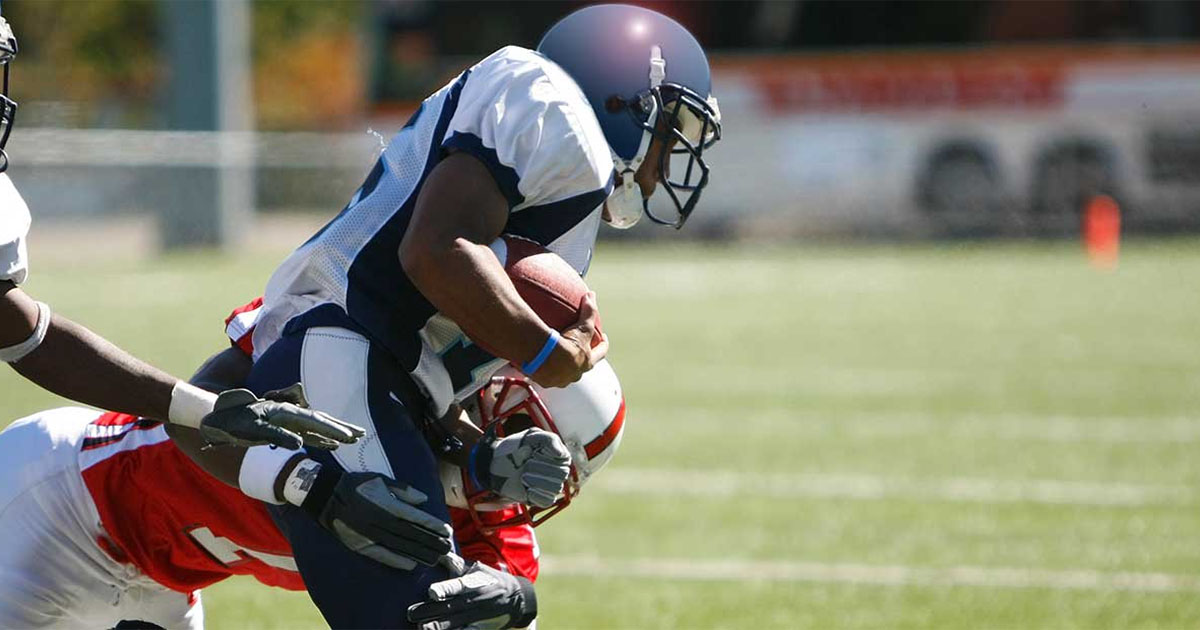Common Football Foot and Ankle Injuries
Advice to improve your movement, fitness, and overall health from the world's #1 in orthopedics.
Many of these injuries are to the foot and ankle—a vulnerable point of contact on the body that bears the bulk of its weight. Here, Mark Drakos, MD, a sports medicine surgeon at HSS who specializes in the foot and ankle, shares the most common foot and ankle football injuries and their treatments.

While they’re not entirely preventable, a good, consistent stretching routine will help avoid muscle strains and calf pulls, and wearing proper shoes will help avoid stress fractures, says Dr. Drakos.
Turf toe
Turf toe is an injury to the ligament of the big toe joint. It occurs when the toe is hyperextended beyond the normal limits of range of motion. Often this injury can occur when the foot is planted in the ground and then another player lands on the back of an athlete’s foot, causing the toe to bend back even further.
Most of the time, the injury is a sprain of the ligament and heals with time and conservative treatments, such as rest in a walking boot (called a CAM boot, for controlled ankle motion) and physical therapy for four to six weeks. If the injury is severe, the toe can dislocate and may need surgery.
High ankle sprain
A high ankle sprain is a sprain of the syndesmosis, which is the ligament that connects the tibia and fibula, the two main bones in the shin. Normally an ankle sprain is the result of a twisting of the ankle and may involve the ligaments lower down in the ankle.
Normally, an ankle sprain takes two to six weeks to heal. A high ankle sprain usually indicates a more significant injury with more ligament damage and can take six to 12 weeks to heal, though it should heal on its own.
Achilles tendon tear
Tears of the Achilles tendon, which is located at the back of the ankle and is the thickest tendon in the body, usually occur when an athlete is changing direction or exploding out of a crouched position. Cornerbacks can get Achilles tears when they quickly stop backpedaling and start accelerating like a sprinter would out of the starting blocks. The Achilles may then pop or tear completely.
These injuries frequently require surgery to fix them. A full return to sport can take a year. The best way to avoid an Achilles tear is to stay hydrated and stretch before any high-intensity activity, says Dr. Drakos.
Fractured bones
The bones in the ankle, foot and hand are the most commonly fractured bones in football. Within the foot, the 5th metatarsal (located in the arch) is a commonly fractured bone and often requires a screw to help mend it. Football players also often have rib fractures, as there are many collisions in every game. These injuries have a surprisingly quick recovery period – one to two weeks, depending on the severity.
Published 8/25/2022




